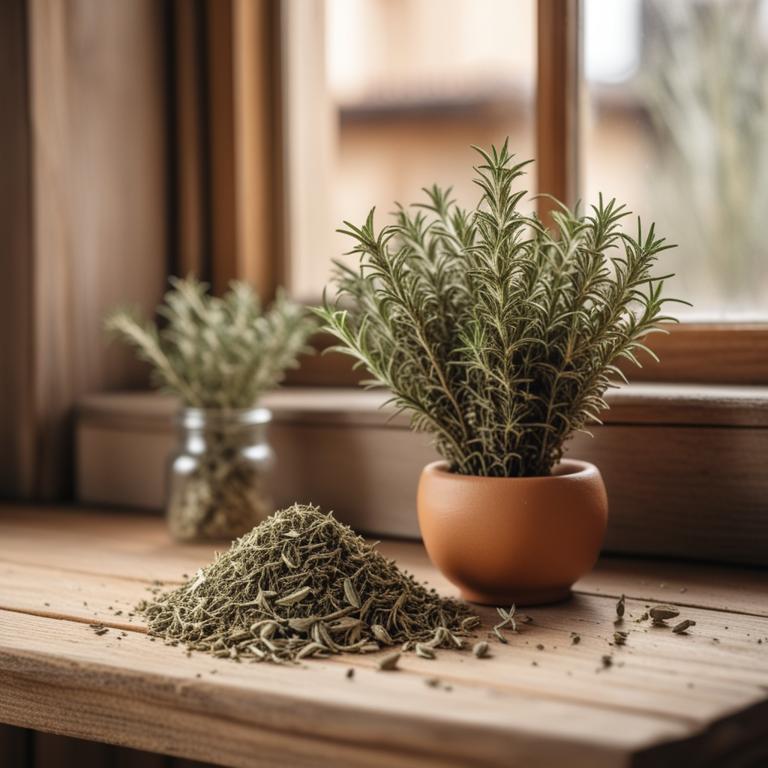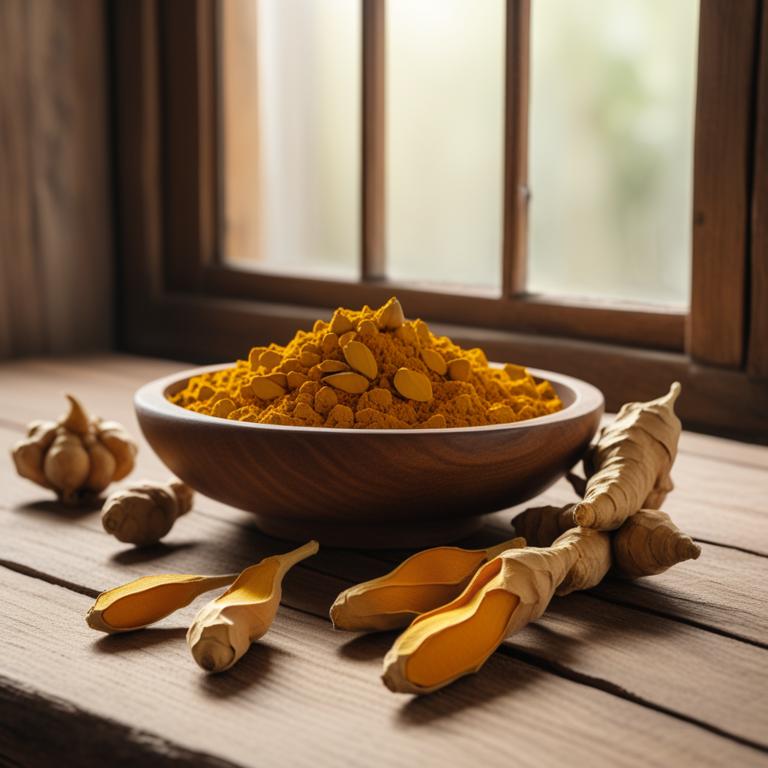Updated: Nov 30, 2024
11 Herbal Tinctures For Throat Congestion

Herbal tinctures can be a great way to relieve throat congestion, especially when you're feeling under the weather.
These natural remedies work by loosening mucus and reducing inflammation in the throat, making it easier to breathe and swallow. Herbal teas are a popular choice because they're easy to make and can be enjoyed hot or cold. For example, Eucalyptus globulus has decongestant properties that help break down mucus, making it an effective ingredient in throat-clearing teas.
Echinacea purpurea, on the other hand, is known for its immune-boosting properties, which can help your body fight off underlying infections. Licorice root, or Glycyrrhiza glabra, has anti-inflammatory properties that can soothe a sore throat and reduce discomfort. When you use these herbal tinctures, you can enjoy several benefits, including a faster recovery from illness, reduced need for over-the-counter medications, and improved overall well-being.
By incorporating herbal teas into your daily routine, you can take a proactive approach to maintaining your health and preventing future illnesses.
This article explains in detail what are the best herbal teas for throat congestion and wh.
Also, you may be interested in...
Today Free Bonus!
The Ultimate Herb Drying Checklist
(For Long-Lasting Powerful Medicinal Effect)
How to easily dry herbs that don't mold and that keep their strong medicinal power for more than 1 year.
Table of Contents
1. Eucalyptus globulus

Eucalyptus globulus tinctures contains several bioactive constituents, including eucalyptol, bornyl acetate, and limonene.
These compounds have anti-inflammatory and decongestant properties, which help to reduce swelling and ease breathing in the throat. Eucalyptol, in particular, has a direct action on the cilia in the respiratory tract, helping to thin mucus and facilitate its removal. The expectorant properties of eucalyptus globulus tinctures also help to loosen and clear out mucus and other debris from the throat, providing quick relief from congestion.
By reducing inflammation and facilitating mucus removal, eucalyptus globulus tinctures can help to alleviate throat congestion and promote a healthier respiratory system.
- Gather 1 cup of fresh Eucalyptus globulus leaves and 2 cups of 80-proof vodka.
- Chop the Eucalyptus leaves into small pieces and place them in a clean glass jar.
- Pour the vodka over the Eucalyptus leaves, making sure they are completely covered.
- Seal the jar and store it in a cool, dark place for 2-3 weeks, shaking the jar daily.
- After 2-3 weeks, strain the liquid through a cheesecloth or a coffee filter into another clean glass jar. Discard the solids and store the tincture in a cool, dark place.
2. Echinacea purpurea

Echinacea purpurea tinctures contains the bioactive constituents alkylamides, caffeic acid derivatives, and glycosides.
These compounds help to reduce inflammation in the throat and promote healing of the mucous membranes. Alkylamides, in particular, have anti-inflammatory properties that can help to soothe a sore throat and calm the body's inflammatory response. Caffeic acid derivatives have antioxidant properties that can help to protect the throat from damage caused by free radicals, which can contribute to congestion.
By reducing inflammation and protecting the throat, Echinacea purpurea tinctures can help to alleviate throat congestion and promote a healthy recovery.
- Gather 1 cup of fresh Echinacea purpurea flowers and leaves. Clean and dry them.
- Combine 1 cup of the Echinacea mixture with 2 cups of vodka in a clean glass jar. Stir well.
- Seal the jar and let it sit in a cool, dark place for 2 weeks, shaking it every day.
- After 2 weeks, strain the mixture through a cheesecloth or a coffee filter into another clean jar. Discard the solids.
- Store the tincture in a cool, dark place. Take 20-30 drops, 3-4 times a day, to help soothe throat congestion.
3. Glycyrrhiza glabra

Glycyrrhiza glabra tinctures contains glycyrrhizin, a triterpenoid saponin responsible for its medicinal properties.
This compound helps reduce inflammation in the throat, making it a good option for relieving congestion caused by swollen tissues. Glycyrrhizin also has a soothing effect on the mucous membranes, which can become irritated and inflamed when congested. Additionally, the tincture contains flavonoids like luteolin and kaempferol, which have anti-inflammatory and antioxidant properties that can aid in reducing swelling and promoting healing.
By targeting the root cause of throat congestion, Glycyrrhiza glabra tinctures can help alleviate symptoms and promote a smoother breathing experience.
- Gather 1 cup of Glycyrrhiza glabra roots and 2 cups of 80% vodka in a clean glass jar.
- Add the roots to the vodka, making sure they are completely covered.
- Seal the jar and store it in a cool, dark place for 2-3 weeks, shaking it every day.
- After 2-3 weeks, strain the liquid through a cheesecloth into another clean glass jar, discarding the roots.
- Label the jar with the date and ingredients, and store it in a cool, dark place. Use 20-30 drops of the tincture in water 3-4 times a day to help relieve throat congestion.
4. Zingiber officinale

Zingiber officinale tinctures contains compounds like gingerols and shogaols, which are responsible for its medicinal properties.
These compounds have anti-inflammatory and expectorant properties, which help to reduce swelling and congestion in the throat. The volatile oils in ginger tincture, such as zingiberene and bisabolol, also help to loosen and clear mucus from the airways, making it easier to breathe. Additionally, ginger's warming properties help to increase blood flow to the affected area, promoting healing and reducing pain and discomfort.
By combining these properties, ginger tincture can provide relief from throat congestion and promote a healthy respiratory system.
- Gather 1 cup of fresh Zingiber officinale (ginger) roots and 2 cups of 80% ethanol (vodka or high-proof spirit).
- Chop the ginger roots into small pieces and place them in a clean glass jar.
- Pour the ethanol over the ginger roots, making sure they are fully covered. Seal the jar and let it sit in a cool, dark place for 2-3 weeks, shaking the jar daily.
- After the infusion period, strain the liquid through a cheesecloth or a coffee filter into another clean glass jar, discarding the ginger solids.
- Transfer the tincture to a dark glass bottle and store it in a cool, dark place. Use 20-30 drops of the tincture in water or tea to help alleviate throat congestion.
5. Sambucus nigra
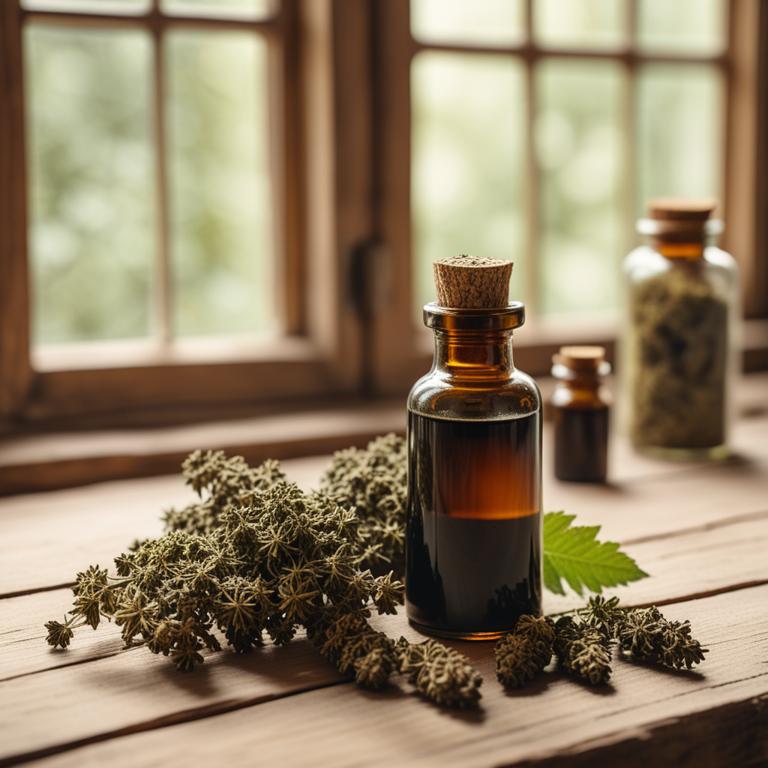
Sambucus nigra tinctures contains bioactive constituents like flavonoids, terpenes, and saponins that help alleviate throat congestion.
The flavonoids, particularly rutin and quercetin, have anti-inflammatory properties that reduce swelling and ease pain in the throat. The terpenes, including limonene and pinene, help thin mucus and make it easier to expel, allowing for better breathing. Sambucus nigra's saponins also have expectorant properties, helping to loosen and clear out mucus from the airways.
By combining these properties, Sambucus nigra tinctures can provide relief from throat congestion and promote easier breathing.
- Gather 1 cup of fresh Sambucus nigra flowers, leaves, and stems.
- Combine the Sambucus nigra plant material with 2 cups of 80-proof vodka in a clean glass jar.
- Seal the jar and store it in a cool, dark place for 2 weeks, shaking the jar every day.
- Strain the liquid through a cheesecloth or a coffee filter into another clean glass jar, discarding the plant material.
- Label and store the Sambucus nigra tincture in a cool, dark place. Take 20-30 drops as needed to soothe throat congestion.
6. Thymus vulgaris
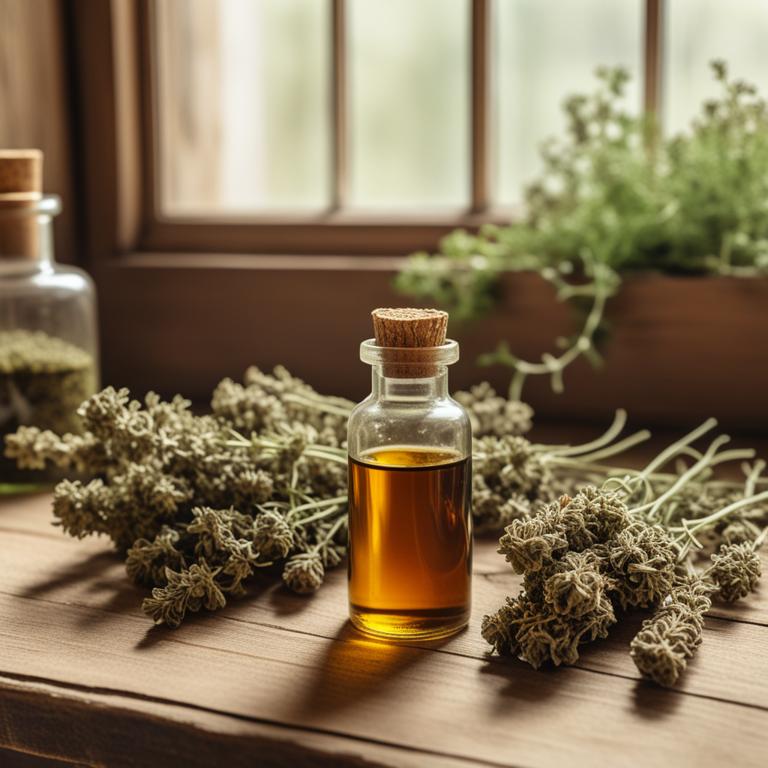
Thymus vulgaris tinctures contains thymol and carvacrol, two potent bioactive constituents that help alleviate throat congestion.
Thymol has antimicrobial properties, which combat bacteria and viruses that cause inflammation and congestion. Carvacrol has expectorant properties, helping to loosen and clear mucus from the throat, making it easier to breathe. These properties work together to reduce swelling and congestion, providing relief from a sore and congested throat.
Thymus vulgaris tinctures can be used to soothe and calm the throat, promoting a healthy and clear respiratory system.
- Gather 1 cup of fresh Thymus vulgaris leaves and 2 cups of 80-proof vodka.
- Chop the Thymus vulgaris leaves and place them in a clean glass jar.
- Pour the vodka over the leaves, making sure they are completely covered.
- Seal the jar and let it sit in a cool, dark place for 2-3 weeks, shaking the jar daily.
- Strain the liquid through a cheesecloth or coffee filter into another clean glass jar, discarding the solids.
7. Rosmarinus officinalis
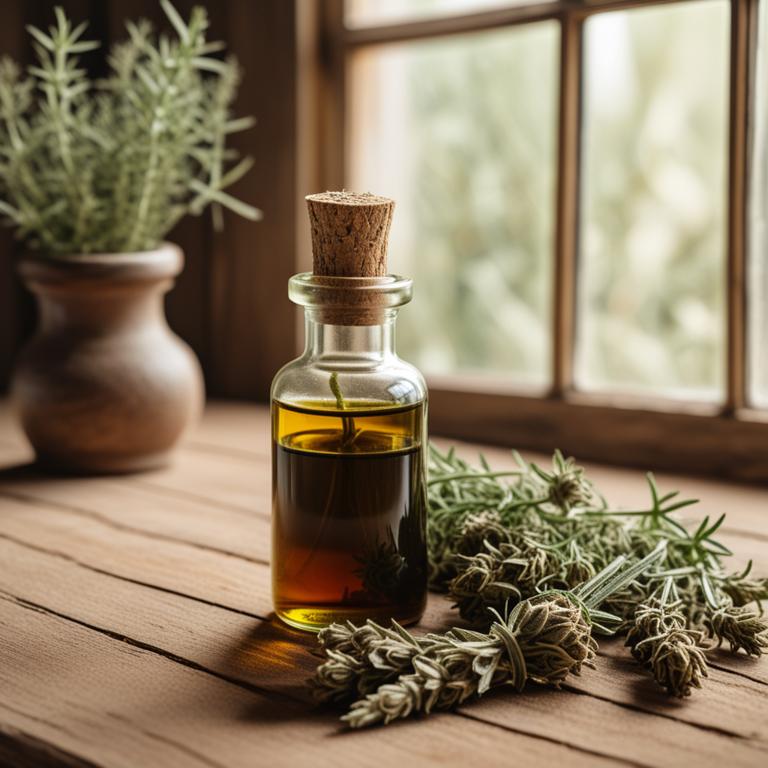
Rosmarinus officinalis tinctures contains rosmarinic acid and camphor as its bioactive constituents.
These compounds have anti-inflammatory and decongestant properties, which make them effective against throat congestion. Rosmarinic acid helps reduce swelling and inflammation in the throat, while camphor acts as a natural expectorant to loosen and clear mucus. The anti-inflammatory properties of rosmarinic acid also help to soothe and calm the throat, reducing discomfort and pain.
The combined effects of these compounds in Rosmarinus officinalis tinctures can provide relief from throat congestion.
- Gather 1 cup of Rosmarinus officinalis leaves and 2 cups of vodka in a clean glass jar.
- Add the Rosmarinus officinalis leaves to the jar and pour in the vodka, making sure the leaves are completely covered.
- Seal the jar and store it in a cool, dark place for 2-3 weeks, shaking the jar every day.
- Strain the liquid through a cheesecloth or a coffee filter into another clean glass jar, discarding the Rosmarinus officinalis leaves.
- Store the tincture in a cool, dark place and take 20-30 drops in water, 3-4 times a day, as needed to relieve throat congestion.
8. Ginkgo biloba

Ginkgo biloba tinctures contains flavonoids and terpenoids as its bioactive constituents.
These compounds have anti-inflammatory properties that help reduce swelling in the throat, making it easier to breathe. The flavonoids, including quercetin and kaempferol, also have antioxidant properties that combat oxidative stress and inflammation in the throat, which can cause congestion. The terpenoids, such as bilobalide and ginkgolides, have antispasmodic properties that can relax the muscles in the throat, reducing coughing and discomfort.
By reducing inflammation and relaxing the muscles, Ginkgo biloba tinctures can help alleviate throat congestion and promote easier breathing.
- Gather ingredients: 1 cup of dried Ginkgo biloba leaves, 2 cups of 80-proof vodka, and a glass jar with a lid.
- Combine Ginkgo biloba leaves and vodka in the glass jar. Stir well to mix.
- Seal the jar and store it in a cool, dark place for 2-3 weeks. Shake the jar every day.
- After 2-3 weeks, strain the mixture through a cheesecloth or a coffee filter into another jar. Discard the solids.
- Store the tincture in a dark glass bottle and use 20-30 drops in water or tea to relieve throat congestion.
9. Echinacea angustifolia
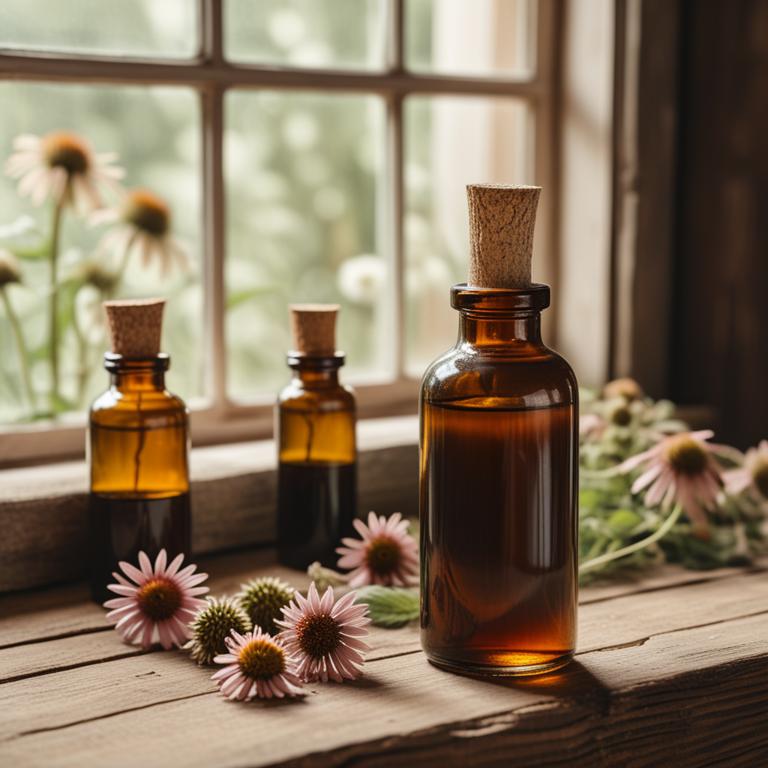
Echinacea angustifolia tinctures contains alkylamides, glycosides, and phenolic acids as its bioactive constituents.
These compounds have anti-inflammatory properties, which help to reduce swelling and ease congestion in the throat. The glycosides, specifically echinacoside and isoechinacoside, have been shown to inhibit the production of pro-inflammatory chemicals that contribute to throat congestion. Alkylamides, such as 8,9-E-alkylamide, also exhibit anti-inflammatory effects, further helping to alleviate throat irritation and congestion.
By reducing inflammation and congestion, Echinacea angustifolia tinctures can help to provide relief from throat congestion.
- Gather 1 cup of fresh or dried Echinacea angustifolia roots.
- Combine the Echinacea roots with 2 cups of vodka in a clean glass jar. Stir well.
- Seal the jar and let it sit in a cool, dark place for 2-3 weeks, shaking it daily.
- After 2-3 weeks, strain the mixture through a cheesecloth or a coffee filter into another jar. Discard the solids.
- Transfer the tincture to small dark glass bottles with dropper lids. Store them in a cool, dark place. Take 20-30 drops, 2-3 times a day, as needed for throat congestion.
10. Lavandula angustifolia

Lavandula angustifolia tinctures contains a high concentration of linalool and linalyl acetate, two potent bioactive constituents known for their decongestant properties.
These compounds work to break down excess mucus and reduce inflammation in the throat, helping to alleviate congestion. The antispasmodic properties of linalool also help to relax the muscles in the throat, allowing for easier breathing and reducing the sensation of discomfort. Additionally, the antimicrobial properties of linalyl acetate help to combat infections that can exacerbate throat congestion.
By combining these properties, Lavandula angustifolia tinctures can effectively help to clear out congestion and promote a healthy respiratory system.
- Gather 1 cup of dried Lavandula angustifolia flowers and 2 cups of 80% vodka or glycerin in clean glass containers.
- Combine the dried flowers and vodka or glycerin in a clean glass jar, making sure the flowers are fully covered.
- Seal the jar and store it in a cool, dark place for 2-3 weeks, shaking the jar daily.
- Strain the mixture through a cheesecloth or a coffee filter into another clean glass container, discarding the solids.
- Bottle the tincture and store it in a cool, dark place. Use 20-30 drops as needed to help relieve throat congestion.
11. Cinchona officinalis

Cinchona officinalis tinctures contains quinine, a bioactive compound that helps reduce inflammation and swelling in the throat.
Quinine also has antiseptic properties, which help prevent infections that can cause throat congestion. The alkaloids in Cinchona officinalis, such as quinidine and cinchonine, have natural decongestant properties that help ease breathing and reduce mucus production. The tannins in Cinchona officinalis tinctures have a drying effect that can help reduce swelling and ease throat irritation.
These properties make Cinchona officinalis tinctures a helpful remedy for relieving throat congestion.
- Gather 1 cup of fresh Cinchona officinalis leaves and 2 cups of 80% vodka in a clean glass jar.
- Chop the Cinchona leaves into small pieces and add them to the jar with vodka.
- Close the jar tightly and shake it well for 10 seconds.
- Let the mixture sit in a cool, dark place for 2 weeks, shaking the jar every day.
- Strain the liquid through a cheesecloth or a coffee filter into another clean glass jar, discard the solids.
FAQ
Can drinking herbal tea prevent throat congestion from forming?
Drinking herbal tea might help ease throat congestion.
Some herbal teas, like peppermint and eucalyptus, contain ingredients that loosen mucus and reduce inflammation in the throat.
When you drink herbal tea, these ingredients can help your body clear out the congestion, making it easier to breathe and swallow.
Is it safe to consume herbal teas for throat congestion every day?
Consuming herbal teas for throat congestion daily can be safe if done in moderation.
Some teas, like peppermint and ginger, can help soothe a sore throat. However, drinking excessive amounts of certain teas, like licorice root, can lead to an imbalance of sodium levels in the body.
Be mindful of tea quantities and listen to your body's response.
How long does it take for herbal teas to show results in throat congestion?
Herbal teas can start to help with throat congestion within 10-15 minutes of drinking.
As you inhale the warm vapor, it can ease congestion and soothe your throat. Within 30 minutes to an hour, you may notice some relief from coughing and swallowing discomfort.
The relief can last for several hours.
Related Articles

Pertussis: Causes, Symptoms, and Natural Remedies with Medicinal Herbs
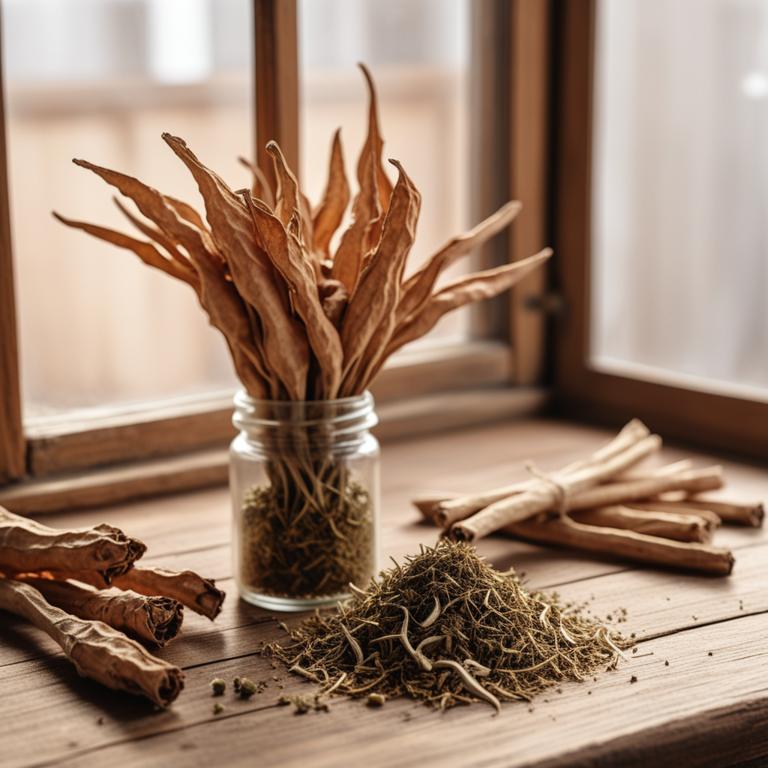
Cough Causes and Natural Cures: The Power of Herbal Preparations

Throat Redness Causes, Remedies with Medicinal Herbs and Herbal Preparations
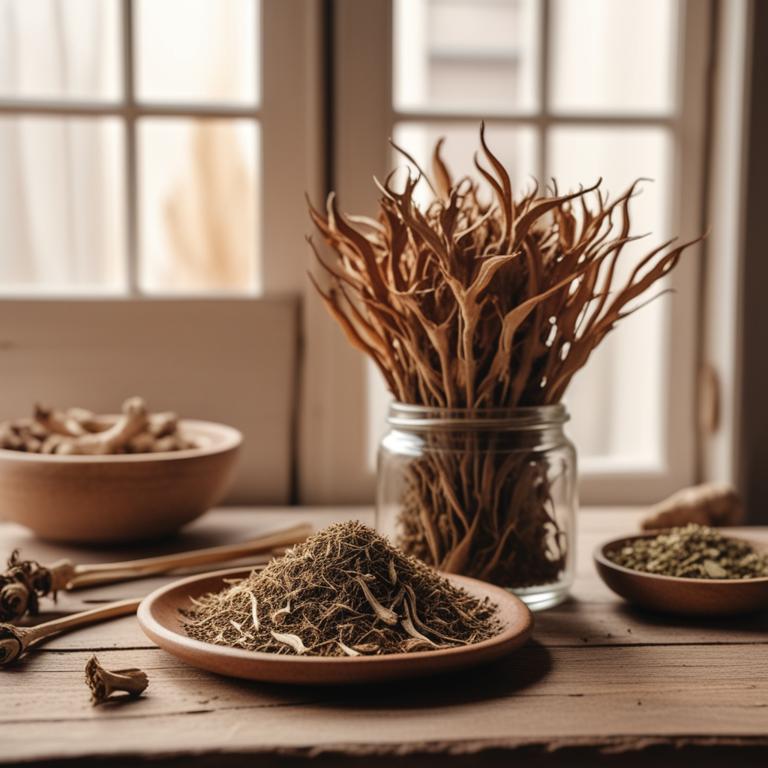
Hoarse Voice: Understanding Causes and Using Medicinal Herbs and Herbal Preparations
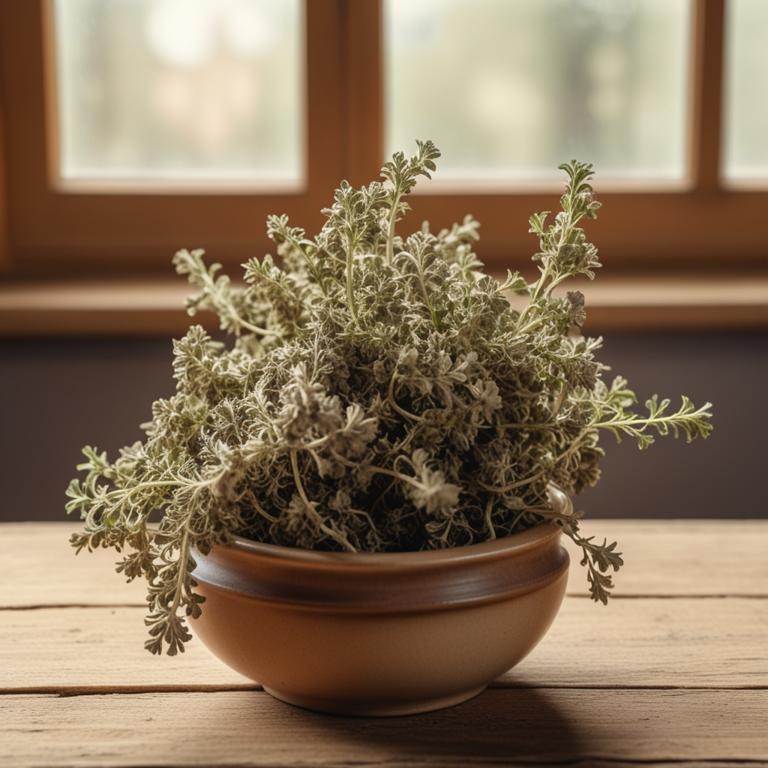
The Complete Guide to Acute Bronchitis: Causes, Medicinal Herbs, and Herbal Preparations




